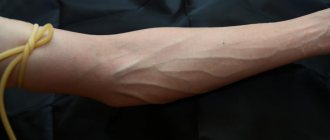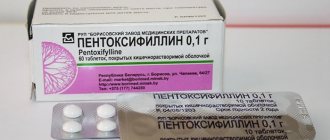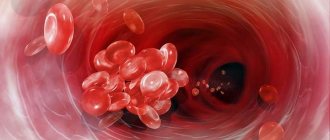Causes of red blood vessels in the eyes
There are many reasons that cause red eyes. These include various inflammations, infections, and excessive visual stress. The eyes turn red when wearing contact lenses if you do not follow the rules of disinfection, the regimen and timing of their wearing. The vessels may become visible if dry eye syndrome develops - with such an ophthalmological problem, a lack of tear fluid is detected, which negatively affects the condition of the capillaries.
Why eyes turn red - reasons:
- colds that occur with fever;
- dry eye syndrome when wearing contact lenses;
- increased visual stress;
- ophthalmological infectious diseases;
- allergic rhinitis, conjunctivitis;
- hypertension - due to increased pressure, blood vessels increase in volume;
- intraocular pressure, glaucoma;
- reaction to the use of medications;
- foreign body, dust, sand getting into the eye;
- hemorrhage as a result of blockage of the retinal veins, its detachment.
Reducing the amount of moisture in the eyes can cause the spread of viruses and infections, and inflammation of the conjunctiva. A healthy person has all the mechanisms to protect against such exposure. Tears contain lysozyme, a protein that has antimicrobial and antiviral effects. If there is little tear fluid, for example, due to working in rooms with functioning climate control equipment, or with increased visual stress at the computer, this can lead to redness of the eyes.
You can eliminate visible eye vessels with the help of whitening drops, which relieve redness and swelling of the conjunctiva, having a vasoconstrictor effect. But the problem will arise again if you ignore the very cause of red eyes.
And this reason may not be harmless at all, because some diseases of the visual organs require serious treatment due to the rapid development of dangerous symptoms. Thus, constantly increased intraocular pressure in glaucoma triggers irreversible processes. The earlier the disease is diagnosed, the better the prognosis.
Symptoms
Dilatation of the veins of the fundus leads to the appearance of the following clinical signs in the patient:
- a veil before the eyes;
- blurred vision near and far;
- microcirculation disorder in retinal tissue;
- the appearance of loss of vision;
- headache;
- feeling of pressure in the eyes;
- inflammatory process in the eyeball;
- optic nerve atrophy;
- retinal detachment;
- macular degeneration;
- the appearance of a tumor process;
- cataract;
- foci of hemorrhages in the fundus.
Return to contents
Factors that cause red eyes
Redness of the whites of the eyes is a common problem, and this makes it seem insignificant. Many people notice that red streaks appear on the whites after a sleepless night, excessive consumption of strong alcoholic beverages, as a result of visual fatigue, and prefer to do nothing to eliminate such symptoms. Meanwhile, alcohol dilates blood vessels, increases blood flow, and then the vessels narrow again and the outflow of blood becomes more difficult, so the capillaries become overfilled with blood, which negatively affects the condition of their walls. The same processes occur when smoking in an unventilated room: blood vessels narrow, blood flow decreases, and dryness appears.
Negative factors affecting the condition of the blood vessels of the eyes:
- external irritants: tobacco smoke, smog, dust, windy weather;
- lack of sleep, bad habits;
- low-quality cosmetics, aerosols (irritation is caused by preservatives, lanolin, zinc oxide, titanium dioxide);
- washing, water procedures using chlorinated water - chlorine disrupts the microflora of the conjunctiva and lacrimal ducts;
- wearing contact lenses with low oxygen permeability parameters - such products prevent the passage of oxygen to the cornea, which affects the health of the visual organs.
To understand why the eyes turn red, you need to know what capillary damage is. The blood vessels do not burst, although many people think so when they see large red islands on the whites of the eyes. Simply due to the dilation of blood vessels, the blood in them becomes visible due to the fact that the walls of the capillaries themselves become thinner. Also, the vessels turn red due to the spread of infection, for example, with viral or bacterial conjunctivitis.
In this case, the fight against redness will be carried out in combination with therapeutic measures aimed at relieving inflammation and eliminating microbes and viruses.
How to remove red blood vessels in the eyes?
You can remove visible red blood vessels in the eyes, if the redness is not associated with colds and ophthalmological diseases, by using anti-inflammatory eye drops. If your eyes are red due to bacterial conjunctivitis, you will need antimicrobial drugs and broad-spectrum antibiotics. Red eyes caused by viruses can be treated with antiviral medications. Drugs such as Zovirax, Lavomax, and Acyclovir are effective against viruses. If the causes of red blood vessels are allergic in origin, you will need antihistamines, which are individually selected by the doctor and written out a prescription. Nowadays, second-generation drugs, without sedation, are more often used.
What else is used for red blood vessels in the eyes? How can you quickly get rid of redness? Redness that appears due to severe fatigue and eye strain, unfortunately, does not go away quickly, but there are effective measures that, when used in complex therapy, can help get rid of visible blood vessels.
Improvement of eyes with weak blood vessels prone to redness:
- the use of eye drops with vitamins that improve nutrition and metabolism in eye tissues, activating recovery processes;
- a course of vitamins for vision - “Taufon Tabs Lutein” with plant carotenoids is suitable, they are recommended for increased visual stress, when working at a computer, impaired twilight vision, constant eye fatigue (prescribed by a doctor);
- massage to relieve swelling of the eyelids - lightly stroking the eyelids with your fingertips improves blood circulation, which helps relieve eye strain;
- whitening vasoconstrictor drops - short-term use of such drugs is allowed when it is necessary to quickly remove redness.
Red eye syndrome occurs when the elasticity of blood vessels decreases and their permeability increases.
To get rid of the problem for a long time, it is necessary to strengthen the blood vessels of the eyes, take medications prescribed by the doctor, and also eliminate the causes of the pathology that affect the appearance of red blood vessels. Red veins are always a clear signal from the body about problems in the blood supply system of the eyeball.
Symptoms
Dilatation of the veins of the fundus leads to the appearance of the following clinical signs in the patient:
- a veil before the eyes;
- blurred vision near and far;
- microcirculation disorder in retinal tissue;
- the appearance of loss of vision;
- headache;
- feeling of pressure in the eyes;
- inflammatory process in the eyeball;
- optic nerve atrophy;
- retinal detachment;
- macular degeneration;
- the appearance of a tumor process;
- cataract;
- foci of hemorrhages in the fundus.
Return to contents
Strengthening eye blood vessels
The choroid of the eye is located between the sclera and the retina. Capillaries form a dense vascular network, which becomes visible only in the presence of pathological changes in the vessels and inflammation of any part of the eye. Increased vascular permeability can be caused by infections, fungi, viruses and bacteria. Vessels also dilate due to the action of histamine (with allergies). The result of this effect is red blood vessels in the eyes.
Remember that ignoring disturbances in the blood supply system of the visual organs can lead to dysfunction of the eye structures, decreased visual acuity, especially if redness is accompanied by pain, inflammation, and decreased visibility. Red blood vessels in the eyes become visible due to changes in the strength and elasticity of the capillary walls.
How to strengthen the blood vessels of the eyes:
- taking vitamin complexes with zinc, lutein, copper, iron;
- proper, well-balanced nutrition (eating foods high in vitamins C, K, A, E);
- eye drops, the action of which is aimed at strengthening the walls of blood vessels, improving metabolic processes, stabilizing cell membranes, reducing intraocular pressure, increasing tissue resistance to oxygen deficiency, regulating the biosynthesis of proteins involved in blood clotting (Taurine, Oftagel, Vizin) , "Emoxipin", "Oftan Katahrom").
To strengthen the blood vessels of the eyes, ophthalmologists prescribe drugs with a complex effect, which not only improve blood flow to the organs of vision, but also have an angioprotective effect, strengthen the vascular wall, and eliminate intraocular hemorrhages. If you urgently need to remove redness from the eyes, you can use whitening drops “Okumetil”, “Betadrin”, etc., just use them with caution.
Narrowing of the fundus vessels - causes, symptoms and treatment
In medicine, narrowing of the fundus vessels is called angiopathy. Usually the pathology does not have an independent character, but becomes a symptom of another disease. To cope with the disorder, you need to consult an ophthalmologist in time.
Otherwise, the anomaly will lead to poor vision and headaches.
Hypertensive angiopathy
A chronic increase in pressure destroys the walls of blood vessels, leading to damage to their inner layer - the endothelium. As a result, compaction of these areas is observed. After some time, they undergo fibrotic processes.
In the area where the vessels intersect, compression of the veins is observed, which leads to impaired blood flow. As a result, conditions are created for the formation of blood clots and hemorrhages.
A person has high blood pressure, rupture of individual vessels. As a result, angiopathy transforms into retinopathy.
A typical symptom of hypertension is vascular tortuosity. According to statistics, at the early stage of hypertension this symptom is diagnosed in 25-30% of people, while at the third stage all people experience abnormal processes.
In difficult situations, hemorrhages occur, the retina becomes cloudy, and destructive processes are observed in its tissues.
Diabetic angiopathy
When diabetes appears in a patient, the structure of the small vessels of the retina and larger vessels of the internal organs is disrupted. As a result of these processes, the patient becomes disabled.
A complex consequence of disorders is retinopathy. It occurs in 90% of people with diabetes. This deviation can be detected already in the initial stages of the disease. This is carried out during an ophthalmological examination, when there are still no symptoms from the organ of vision.
Deterioration of vision is a late sign that indicates the irreversibility of changes. With prolonged diabetes, vision is impaired so severely that the person becomes unable to work.
Complete blindness with this disorder is 25 times more common in patients with diabetes than in those who do not have this disease.
Traumatic angiopathy
This form of pathology is caused by compression of the skull, chest, and abdominal cavity. It can also be a consequence of a neck injury. Damage to the blood vessels of the organ of vision is caused by a sharp increase in pressure and compression of the blood vessels in the neck area.
Characteristic symptoms of such an anomaly include severe vasoconstriction and hemorrhage in the retina. This process is characterized by a sudden deterioration in vision. Moreover, it is not always possible to normalize it.
Hypotonic angiopathy
Weakening of vascular tone and a decrease in the rate of blood flow during hypotension form the prerequisites for the appearance of blood clots.
This type of illness is accompanied by a noticeable expansion and branching of the arteries, a sensation of pulsation in the veins, which a person can feel. Many people also experience headaches and dizziness.
Patients often experience weather dependence.
Juvenile angiopathy
The second name for this little-studied anomaly is “Eales disease.” This condition is extremely rare. It manifests itself in the form of inflammation of the retinal vessels, which has an unclear etiology.
With this disease, hemorrhages occur. They can be localized in the area of the retina or vitreous body. There is also a risk of connective tissue overgrowth. This leads to dangerous consequences such as retinal detachment or the development of cataracts.
In addition, the anomaly can cause glaucoma.
Medications
Vascular damage requires the use of a whole range of medications:
- Drugs to normalize blood flow. These include Trental, Actovegin. It is worth considering that this category of products should not be used by women during pregnancy and lactation. They are also contraindicated for children. If it is necessary to treat these categories of patients, the decision on the appropriateness of a particular drug must be made by the doctor.
- Means for reducing the permeability of vascular walls. This group includes calcium dobesilate and parmidine.
- Substances to reduce platelet aggregation. These include dipyridamole and ticlodipine.
- Vitamins. It is important to take vitamins B, C, P, E.
Courses of therapy usually last 2-3 weeks. They must be repeated 2 times a year. All substances can be used only after consulting a doctor.
If you have diabetes, it is important to use medications to lower your blood sugar and stick to your prescribed insulin dosage. In case of atherosclerosis and arterial hypertension, means are needed to normalize blood pressure parameters and cholesterol levels.
In addition to systemic medications, the ophthalmologist may prescribe eye drops. The most effective means include the following:
- Vitaminized substances - these include lutein complex and anthocyanin forte;
- Vascular agents – emoxipin, taufon.
Medicines ensure normal blood flow in the eyes. Thanks to this, the patient's condition improves significantly.
Physiotherapy methods
For treatment to be effective, it must be comprehensive. Most often, the following methods are used to treat angiopathy:
- Magnetic influence;
- Acupuncture;
- Laser exposure.
Folk remedies
In addition to standard therapy, you can use home recipes:
- Mix 100 g of chamomile, immortelle, St. John's wort. Take the same volume of birch and yarrow buds. Add 500 ml of boiling water to 1 large spoon of the mixture and leave for 20 minutes. Bring the strained product to the original amount. Take 1 glass in the morning and before bed. In the evening after using the product, it is forbidden to drink or eat.
- Take 1 small spoon of mistletoe powder, add 1 cup of boiling water and leave to steep overnight. Take 2 large spoons twice a day. Treatment should last 3-4 months.
- Mix 15 g of lemon balm and valerian rhizomes, add 50 g of yarrow. Mix 2 small spoons of the mixture with a glass of water and leave for 3 hours. Infuse the composition in a cool place. Place in a steam bath for a quarter of an hour, cool and strain. Add water to make 250 ml. Take throughout the day in small portions. This treatment should be continued for 3 weeks.
Narrowing of the eye vessels indicates various pathologies and can provoke negative health consequences. To minimize the likelihood of illness, you should consult a doctor in a timely manner and strictly follow his instructions.
Source: https://zrenie.guru/suzhenie-sosudov-glaznogo-dna
Whitening eye drops: application features
Drops for whitening proteins do an excellent job with the aesthetic task of removing red blood vessels and making the look clean and radiant. Such preparations not only eliminate redness, but also lighten the entire protein if it has a dull, yellow color. The effect of bleaching drops is vasoconstrictive, so their long-term use is not recommended. They can help if your eyes are red due to allergies, fatigue, and you need to look cheerful and fresh.
Whitening drops - action:
- have a slight anti-inflammatory effect;
- remove redness of the eyes, swelling;
- moisturize the eyes;
- The aesthetic effect is quick; within an hour after using the drug, the eyes will brighten.
You should not use whitening drops for more than one week, otherwise addiction will occur and they will no longer be effective. Be careful, these drugs have contraindications, so be sure to consult with your doctor.
Red blood vessels in the eyes: treatment with folk remedies
Folk remedies can really help if the eyes are red and look tired, but pharmaceutical drugs are not at hand. But use such remedies only when prescribed by a doctor. And you are sure that there is no inflammation, infection, and the redness of the eyes is caused only by fatigue and overexertion, but not by an exacerbation of ophthalmic diseases.
Folk remedies for red eyes:
- herbal compresses from chamomile, basil, blue cornflower, flax seeds, oak bark - it is better to use cool liquid or decoctions at room temperature, this is effective for relieving swelling;
- tea lotions - you can use black or green tea bags for compresses;
- applying raw potato circles to the eyelids for 20-30 minutes;
- washing the eyes with cucumber water (prepared from the peel of fresh fruits, which is poured with boiling water and infused for half an hour).
Be especially careful with recipes based on honey and other bee products, which can cause an unwanted allergic reaction even in people who are not prone to allergies. Give preference to medications prescribed by an ophthalmologist. They are safe, and most importantly, they have a quick effect.
Prevention
If redness of the eyes was associated only with increased visual stress and fatigue, and not with the development of an infectious disease, if ophthalmological pathologies were not identified, then preventive measures will help prevent the occurrence of such disorders in the future. Eyes turn red due to hypertension, lack of sleep, unhealthy lifestyle, negative environmental factors (wind, tobacco smoke, working climate control equipment, etc.).
Lack of oxygen also has a negative impact on eye health. There are many reasons why there is not enough oxygen in the tissues: non-compliance with wearing contact lenses, unfavorable environmental conditions, poor circulation. All this affects the general health of a person and the condition of his eyes, which, due to lack of oxygen, quickly get tired, turn red, and swell. To completely get rid of red eye syndrome, it is necessary to follow a set of preventive measures:
- normalization of sleep, rest and work patterns - during sleep, the visual organs rest and recover, so it is important to sleep for at least 7-8 hours;
- visual gymnastics - exercises are aimed at improving metabolism, normalizing blood flow, strengthening the vascular system of the eye;
- the use of moisturizing drops for increased visual stress, wearing contact lenses - choose moisturizing preparations without preservatives, with hyaluronic acid, to create a protective tear film on the surface of the eye, for example, Hilo-Komod drops;
- physical activity, healthy lifestyle - performing physical exercises helps saturate all tissues with oxygen, which has a positive effect on the condition of the blood vessels in the eyes, strengthens them;
- eye protection from ultraviolet radiation - if you wear glasses or lenses, choose products equipped with protective filters, and always wear sunglasses in sunny weather;
- control of visual stress - take breaks while working at the computer, do not let your eyes become overstrained.
It will be much better if you organize your workspace correctly. The better the lighting, the less strain will be on the visual organs. Do not use products for hygiene procedures that may irritate the mucous membrane of the eyes.
Proper, balanced nutrition will also help. Your daily diet should include vegetables and fruits, berries and other foods high in vitamins that are good for the eyes. Give preference to leafy greens, citrus fruits, lean meat and sea fish, fruit drinks and compotes, try to consume less foods with preservatives.
Causes
The vessels on the face are directly connected to the peripheral ophthalmic veins. Together they organize the flow and filtration of blood on the face.
Due to exposure to an unfavorable environment, blood circulation is disrupted, the walls become thinner and expand. As a result, the varicose veins of the eye become swollen.
This phenomenon occurs due to:
- a person receives a brain injury;
- coronary disorder;
- regular sudden surges in pressure;
- diabetes mellitus;
- atherosclerotic plaque formed on the face;
- excessive physical activity and heavy lifting;
- prolonged exposure to the sun on the face;
- incorrectly performed cosmetic procedures with cold;
- long-term use of sedative medications;
- systemic diseases;
- sedentary work, which is accompanied by prolonged sitting at a computer and visual impairment.











